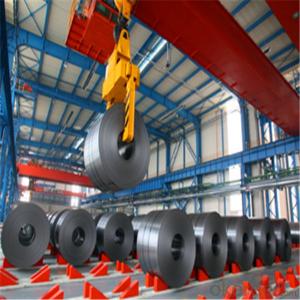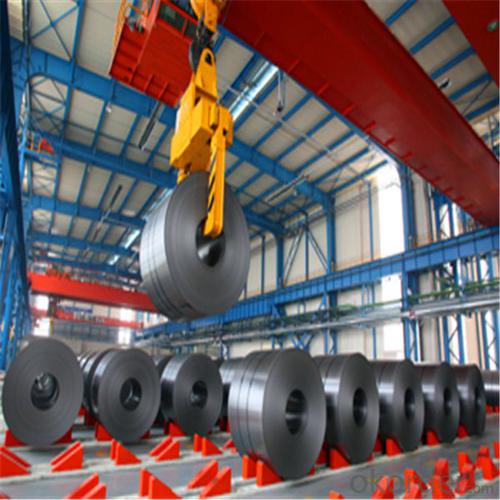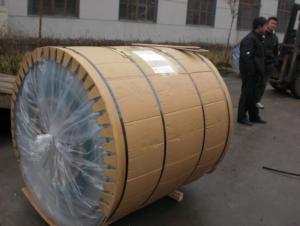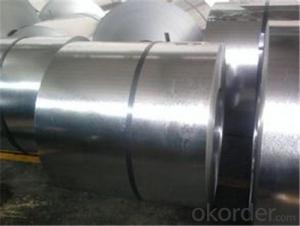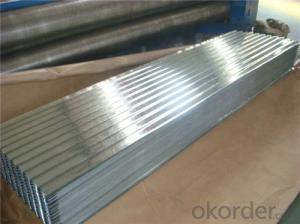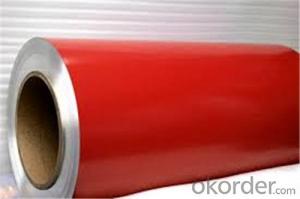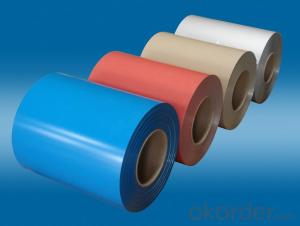Cold Rolled Steel Coil for Roofing Sheet
- Loading Port:
- China main port
- Payment Terms:
- TT OR LC
- Min Order Qty:
- 12 m.t.
- Supply Capability:
- 10000 m.t./month
OKorder Service Pledge
OKorder Financial Service
You Might Also Like
Specification
COLD ROLLED STEEL COIL
| Thickness | 0.18mm-1.8mm |
| Thickness tolerance | ±0.02mm |
| Width | 700--1300mm |
| Width tolerance | ±2mm |
| Length | 1-6m or in coil |
| Type | Cold rolled |
| Types | Commercial / Drawing / Deep Drawing / Structural quality |
| Quality | Soft or hard quality |
| Standard | ASTM, AISI, DIN, GB,JIS |
| Material | SGCC, DX51D,DX52D, DX53D,SGCD , Q195, Q235, SGHC, DX54D, S350GD, S450GD, S550GD, etc |
| Spangle State | Regular spangle, small spangle, big spangle, non-spangle |
| Surface treatment | chromed / oiled/slightly oiled/ dry/ anti-fingerprint etc |
| Coil weight | 10 ton or up to you |
| Coil ID: | 508 /610mm |
| Packing | Standard exportation packing |
| Min order | As per specification |
Products and Equipments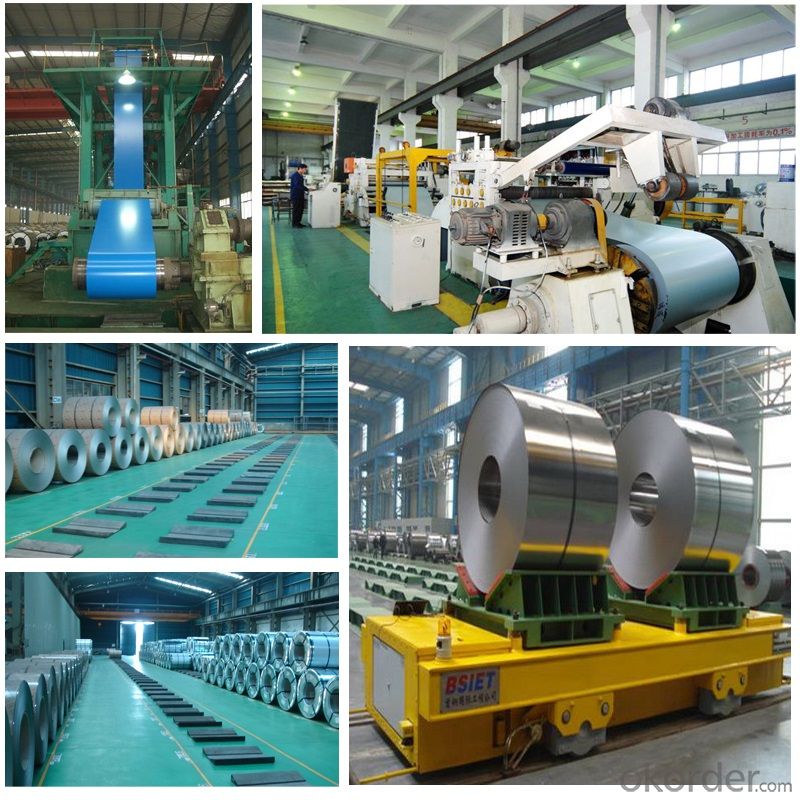 Packing
Packing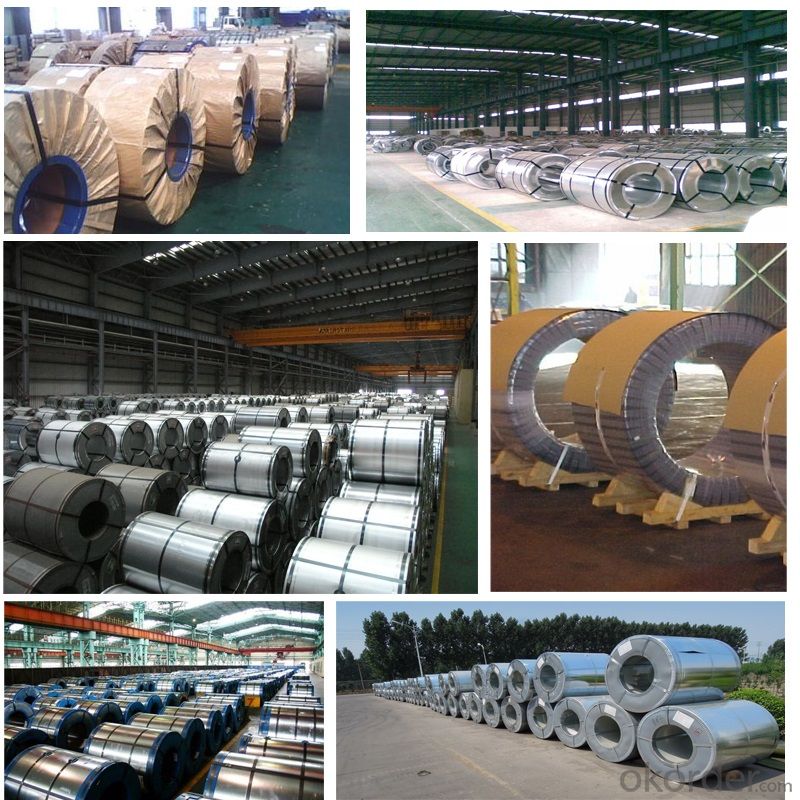
Quality and Loading

FAQ
1. Q: Where is your company located? How can I visit there?
A: Our company is located in Hebei, China. Welcome to visit us.
2. Q: Can I get sample and how long will it take?
A:Yes. We can supply sample. And you need to pay for courier.
3. Q: What's the MOQ?
A: Our MOQ is 10mt.
4. Q: What's the delivery time?
A: It will take about 30 days after TT or L/C.
5. Q: What is the payment terms?
A: T/T, L/C at sight
6. Q: How does your factory carry out quality control?
A: We attach great importance to quality control.Every part of our products has its own QC.
7. Q: What certificate do you have?
A: We have SGS, ISO9001 etc. Also we can apply any certificate if you need if the qty is OK.
- Q: How are steel coils used in the manufacturing of telecommunications equipment?
- Steel coils are used in the manufacturing of telecommunications equipment for various purposes. They are often used to create the framework and structure of the equipment, providing stability and support. Additionally, steel coils can be used for manufacturing components such as brackets, mounts, and enclosures, ensuring durability and protection for the sensitive electronic components inside the equipment.
- Q: I know that they have steel shot in smaller sized pellets....say, number 4 shot. I guess it's for waterfowl, etc.Do they make steel buckshot? If not, why not? Would the pellets be too heavy? Wouldn't they have excellent penetration ability?
- No Steel Buckshot ...Yet... The whole idea behind steel shot was because there were a very large number of migratory birds, Geese, Ducks, etc dying after being hit with lead shot and developing infections, and lead poisoning, that ultimately killed or crippled too many birds. The Federal government stepped in and made Steel Shot a requirement for hunting all migratory birds. I think the biggest reason that Steel Buckshot isn't made yet is because it can only be fired out of modern, newly manufactured shotgun barrels and unless you have a shotgun designed to be used with steel shot, it would be damaged along with chokes made for lead shot only..I have no doubts that it's probably coming in the near future....Note* Penetration was never an issue, nor was the weight.........
- Q: What are the different types of packaging for steel coils?
- There are several different types of packaging options available for steel coils, depending on the specific requirements and preferences of the manufacturer or distributor. Some of the most common types of packaging for steel coils include: 1. Wooden Crates: Steel coils can be packed in wooden crates, which provide excellent protection against damage during transportation and handling. These crates are typically made of strong and durable wooden materials, such as plywood or solid wood, and are designed to securely hold the steel coils in place. 2. Steel Frames: Another common packaging option for steel coils is steel frames. These frames are constructed using sturdy steel materials and are designed to hold the coils securely in place to prevent any movement or shifting. Steel frames are often used for larger or heavier coils, as they offer enhanced stability and durability. 3. Cardboard Boxes: For smaller or lighter steel coils, cardboard boxes can be a suitable packaging option. These boxes are typically made of strong and durable cardboard materials, and they provide adequate protection against minor impacts and scratches. Cardboard boxes are also easy to handle and can be conveniently stacked or stored. 4. Plastic Wrapping: In addition to using crates, frames, or boxes, steel coils can also be wrapped in plastic materials for added protection. Plastic wrapping is typically used to secure the coils and protect them from moisture, dust, and other external elements during transportation and storage. This type of packaging is commonly used in conjunction with other packaging options. 5. Transportation Racks: For efficient handling and transportation, steel coils can be packaged in specially designed transportation racks. These racks are typically made of steel or other strong materials and are designed to securely hold the coils in place. Transportation racks allow for easy loading and unloading of the coils and provide enhanced safety during transit. Overall, the type of packaging chosen for steel coils depends on factors such as the size and weight of the coils, the transportation method used, and the level of protection required. Manufacturers and distributors often consider these factors in order to select the most appropriate packaging solution that ensures the safe and efficient handling of steel coils throughout the supply chain.
- Q: How do steel coils contribute to energy efficiency in appliances?
- Steel coils contribute to energy efficiency in appliances in several ways. Firstly, steel coils are commonly used in the heat exchangers of appliances such as refrigerators, air conditioners, and water heaters. These coils transfer heat efficiently, allowing appliances to cool or heat the desired space using less energy. By maximizing heat transfer, steel coils help appliances reach the desired temperature faster and maintain it with minimal energy consumption. Secondly, steel coils are often used in the heating elements of appliances like stoves and ovens. These coils provide direct heat to cook or bake food. Steel's excellent thermal conductivity ensures that the heat is evenly distributed, reducing cooking time and energy consumption. This allows appliances to work more efficiently, saving both time and energy. Furthermore, steel coils are durable and long-lasting, which contributes to energy efficiency in appliances. Appliances with steel coils are built to withstand high temperatures and frequent use. This means they require less maintenance and replacement, resulting in fewer resources being used to produce new appliances. By reducing waste and conserving resources, steel coils indirectly contribute to energy efficiency and sustainability. Lastly, steel is a recyclable material. When appliances reach the end of their life cycle, the steel coils can be recycled and used to produce new products. Recycling steel reduces the need for extracting raw materials and saves energy that would otherwise be required in the manufacturing process. This promotes energy efficiency and reduces the environmental impact of appliances. In conclusion, steel coils contribute to energy efficiency in appliances by optimizing heat transfer, reducing cooking time, promoting durability, and facilitating recycling. These factors collectively help appliances operate more efficiently, save energy, and contribute to a more sustainable future.
- Q: What are the different types of steel surface finishes for coils?
- There are several types of steel surface finishes for coils, including hot rolled, cold rolled, galvanized, coated, and pickled and oiled.
- Q: What are the different types of steel coil coatings for heat resistance?
- There are several types of steel coil coatings available for heat resistance. These coatings are designed to protect the steel surface from high temperatures and prevent oxidation or degradation. One common type of coating is the organic coating, which is typically made of epoxy, polyester, or polyurethane. These coatings provide a protective barrier against heat and prevent the steel from corroding or oxidizing. Organic coatings are often used in applications where moderate heat resistance is required. Another type of coating is the inorganic coating, which is typically made of ceramic or metallic materials. These coatings provide excellent heat resistance and can withstand extremely high temperatures. Inorganic coatings are commonly used in industries such as automotive, aerospace, and power generation, where components are exposed to intense heat. There are also specialized coatings available for specific heat resistance requirements. For example, silicone coatings provide exceptional heat resistance and can withstand temperatures up to 600°C (1112°F). These coatings are commonly used in applications such as exhaust systems, ovens, and industrial furnaces. Additionally, some steel coil coatings may contain additives or fillers to enhance their heat resistance properties. These additives can improve the coating's ability to withstand high temperatures and provide better protection against heat-related issues. In summary, there are various types of steel coil coatings available for heat resistance, including organic coatings, inorganic coatings, and specialized coatings. The choice of coating depends on the specific heat resistance requirements of the application, and factors such as temperature range, duration of exposure, and environmental conditions should be considered when selecting the appropriate coating.
- Q: How are steel coils used in the production of furniture?
- Steel coils are used in the production of furniture to provide structural support and durability. They are commonly used in the construction of sofas, chairs, and other seating furniture to create a strong and sturdy foundation. The coils are typically incorporated into the furniture's frame or used in the construction of the seat cushions, providing comfort and resilience.
- Q: i currently have just steel guitar strings, not a fan they need replacing and i was wondering whats the difference between steel and bronze strings and or nickle strings?
- You may want to experiment with different alloys to find which sound best on your guitar...but if it's acoustic, you should be using bronze wound strings.
- Q: How are steel coils used in the production of steel brackets?
- Steel coils are used in the production of steel brackets as they serve as the primary raw material. The coils are processed through various manufacturing techniques such as cutting, bending, and welding to shape and form the brackets. The high strength and durability of steel coils ensure that the brackets maintain their structural integrity and can withstand heavy loads or harsh conditions.
- Q: I'm ordering a Pair of tongs(a tool used to dig quahogs in bays that scrapes the bottom constantly) and what type of metal would be the best to fabricate it, steel or stainless steel?
- Stainless okorder
Send your message to us
Cold Rolled Steel Coil for Roofing Sheet
- Loading Port:
- China main port
- Payment Terms:
- TT OR LC
- Min Order Qty:
- 12 m.t.
- Supply Capability:
- 10000 m.t./month
OKorder Service Pledge
OKorder Financial Service
Similar products
Hot products
Hot Searches
Related keywords
